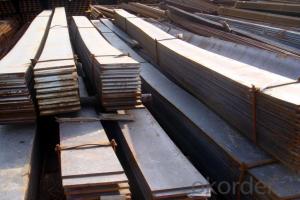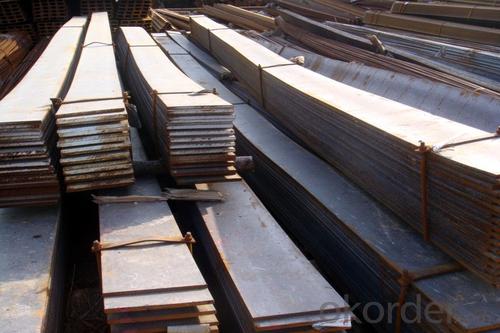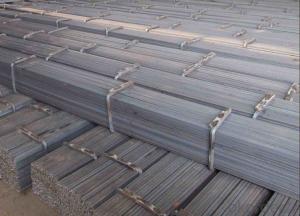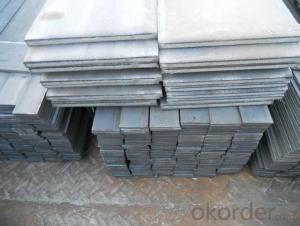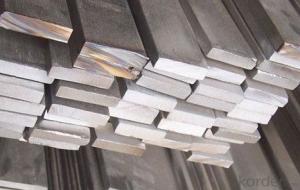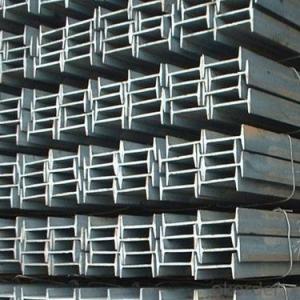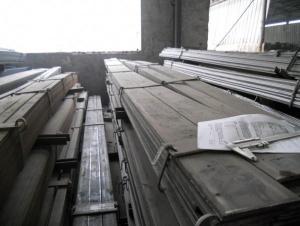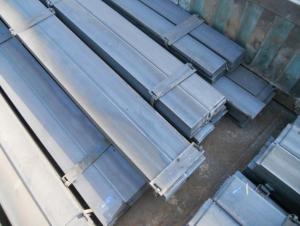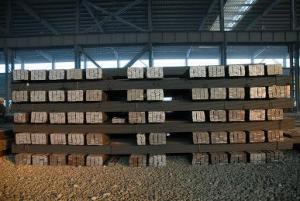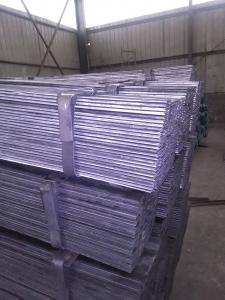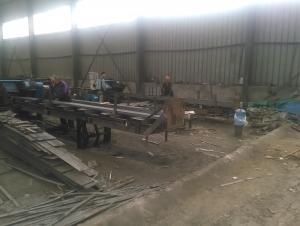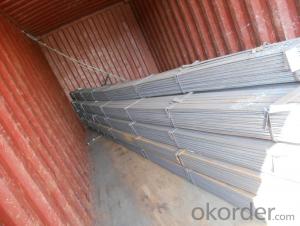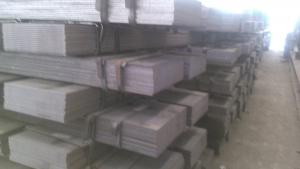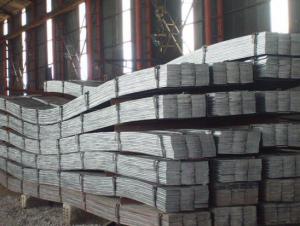Special Steel Flat Bar For Automobile Use
- Loading Port:
- China main port
- Payment Terms:
- TT or LC
- Min Order Qty:
- 50 m.t.
- Supply Capability:
- 5000 m.t./month
OKorder Service Pledge
OKorder Financial Service
You Might Also Like
Commodity: Carbon Steel Flat Bar
Standard: GB, JIS, ASTM,
Material: Q235, SS400 or Equivalent
Origin place: China
Thickness: 3mm-30mm
Width:20mm-200mm
Length: Max 12m
Certification: SGS/BV
Chemical composition
Alloy No | Grade | Element(%) | ||||
C | Mn | S | P | Si | ||
Q235 | B | 0.12—0.20 | 0.3—0.7 | ≤0.045 | ≤0.045 | ≤0.3 |
Physical properties
Alloy No | Grade | Yielding strength point(Mpa) | Tensile strength (Mpa) | Elongation after fracture(%) | ||||||
Thickness (mm) | Thickness (mm) | |||||||||
≤16 | >16--40 | >40--60 | >60--100 | ≤16 | >16--40 | >40--60 | >60--100 | |||
≥ | ≥ | |||||||||
Q235 | B | 235 | 225 | 215 | 205 | 375--500 | 26 | 25 | 24 | 23 |
Usage/Applications of Flat Bar
Widely used for construction;
Machinery manufacturing;
Iron tower steel structure;
Shipbuilding; Steel grating;
Staircase;
Bridge;
Viaduct;
Railway spare parts;
Boilers making etc.
Packaging & Delivery
Packaging Details: The Steel Flat Bars are packed in bundles and loaded in 20 feet/40 feet container, or shipped by bulk cargo ,also we can do as customer's requirements.
Delivery Details:30~45 days upon the receipt of buyer payment by T.T. or L/C.
Production Flow
The Carbon Steel Flat Bar is made through three processes:
1.Feeding the material: Feeding the row material (the steel plate) to Slitting Line.
2.Slitting:The steel plate would be slitted into expected width by lengthways cutter.
3. Leveled and cutting: The plat bar would be ground into level by the grinder and then cut into required length.
FAQ:
Q1: Why buy Materials & Equipment from OKorder.com?
A1: All products offered byOKorder.com are carefully selected from China's most reliable manufacturing enterprises. Through its ISO certifications, OKorder.com adheres to the highest standards and a commitment to supply chain safety and customer satisfaction.
Q3: How soon can we receive the product after purchase?
A3: Within three days of placing an order, we will begin production. The specific shipping date is dependent upon international and government factors, but is typically 7 to 10 workdays.
Q4: What makes stainless steel stainless?
A4: Stainless steel must contain at least 10.5 % chromium. It is this element that reacts with the oxygen in the air to form a complex chrome-oxide surface layer that is invisible but strong enough to prevent further oxygen from "staining" (rusting) the surface. Higher levels of chromium and the addition of other alloying elements such as nickel and molybdenum enhance this surface layer and improve the corrosion resistance of the stainless material.
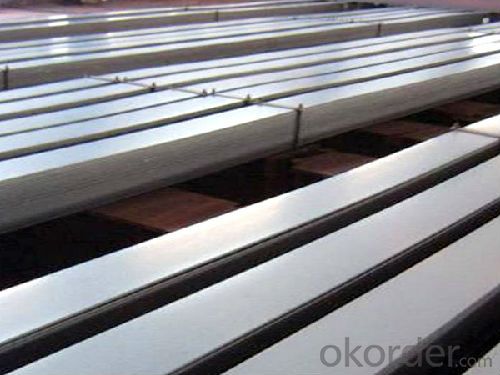
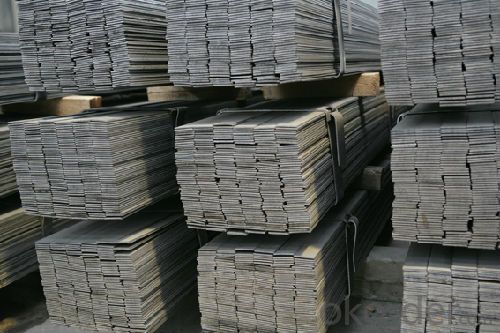
- Q: What is the rolling range of the micro cold rolled flat steel production line?
- Flat steel, width 12-300mm, thickness 4-60mm, cross section is rectangular and with pure edge of steel. Flat steel can be finished steel, or can be used as the blank of welded pipe and thin slab for laminated sheet rolling. Section steel is one of the four major steel products (plate, tube, mould, wire). According to the section shape, the section steel is divided into simple section steel and complex section steel (deformed steel). The former refers to the steel, round steel, flat steel, angle steel, six angle steel; the latter refers to the I-beam, channel steel, steel, steel, steel frame bending etc..
- Q: What are the different surface finishes available for steel flat bars?
- Steel flat bars come in a range of surface finishes, each with its own unique properties and visual appeal. 1. The hot rolled finish is the most commonly used surface finish for steel flat bars. It involves heating the steel above its recrystallization temperature and then rolling it to achieve the desired shape. This finish has a rough and scaled texture, making it suitable for applications where appearance is not the main concern. 2. The cold drawn finish, on the other hand, involves pulling the steel flat bar through a die to reduce its thickness and improve its surface finish. This results in a smooth and polished surface, making it ideal for applications that require a clean and sleek appearance. 3. For a high-gloss shine, the cold drawn bars can be further polished to achieve a bright finish. This type of surface finish is often used in decorative applications, such as handrails, furniture, and architectural elements, where a reflective and visually pleasing surface is desired. 4. To protect the steel flat bar from corrosion, a galvanized finish can be applied. This involves applying a layer of zinc to the surface, providing excellent durability and resistance to rust. It is particularly suitable for outdoor applications or environments with high moisture content. 5. Additionally, steel flat bars can be coated with different materials to enhance their appearance or provide extra protection. Common coatings include powder coating, which offers a durable and decorative finish, and epoxy coating, which increases resistance to chemicals and abrasion. Ultimately, the choice of surface finish for steel flat bars depends on the specific requirements of the application, taking into account factors such as aesthetics, corrosion resistance, and durability.
- Q: How do steel flat bars perform in terms of weather resistance?
- Steel flat bars are generally known for their excellent weather resistance. They are typically made from high-quality steel alloys that have been specifically designed to withstand harsh environmental conditions. The steel used in flat bars is often coated or treated with protective layers, such as galvanization or powder coating, which further enhances their resistance to weathering. Steel flat bars are highly resistant to corrosion, rust, and degradation caused by exposure to moisture, humidity, rain, and snow. This resistance is especially valuable when these bars are used in outdoor applications or in areas prone to extreme weather conditions. In comparison to other materials, such as wood or aluminum, steel flat bars are more durable and less susceptible to damage from weather exposure. Furthermore, steel flat bars are also resistant to UV radiation from the sun, which can cause fading, discoloration, and degradation in other materials. This makes them suitable for outdoor structures, such as fences, handrails, or grating, as they can maintain their appearance and structural integrity over an extended period. However, it is important to note that the weather resistance of steel flat bars can vary depending on the specific grade of steel used and the protective coatings applied. Additionally, regular maintenance, such as cleaning and applying protective coatings, can further enhance their longevity and weather resistance.
- Q: How do steel flat bars contribute to the overall sustainability of a structure?
- Steel flat bars contribute to the overall sustainability of a structure by providing several key benefits. Firstly, steel is a highly durable and long-lasting material, which means that structures constructed with steel flat bars have a longer lifespan and require less frequent maintenance or replacement, reducing the overall environmental impact. Additionally, steel is a highly recyclable material, and steel flat bars can be easily recycled and reused at the end of their life cycle, making them a more sustainable choice compared to other materials. Moreover, steel has a high strength-to-weight ratio, allowing for lighter and more efficient structures, which can reduce the amount of materials needed and minimize the carbon footprint of construction projects. Overall, the use of steel flat bars enhances the sustainability of structures through durability, recyclability, and efficient design.
- Q: What are the different packaging options available for steel flat bars?
- Customers or industries can choose from several packaging options for steel flat bars based on their specific requirements and preferences. Here are some commonly used packaging options: 1. Bundling: Steel flat bars are frequently bundled together using steel straps or wires. This cost-effective and efficient method allows for easy transportation and storage. The number of bars in a bundle varies depending on their size and weight. 2. Wooden Crating: In certain situations, steel flat bars are packaged in wooden crates to provide additional protection during transportation. The bars are neatly stacked inside the crate, ensuring they are secure and shielded from potential damage. 3. Palletizing: Steel flat bars can also be packaged on pallets for convenient handling and transportation. The bars are typically placed on top of the pallet and secured with straps or stretch wrap. Pallet packaging allows for efficient loading and unloading using forklifts or pallet jacks. 4. Customized Packaging: Depending on specific customer requirements, steel flat bars can be packaged in custom options such as cardboard boxes or tubes. This provides extra safeguarding against moisture, dust, or other potential damage during transportation or storage. 5. Bulk Packaging: For large-scale industrial applications, steel flat bars can be packaged in bulk without individual packaging. The bars are stacked together, either bundled or loose, and directly loaded into shipping containers or trucks. This option is suitable for customers equipped to handle bulk shipments. It's important to consider factors such as size, weight, quantity, and destination when choosing a packaging option for steel flat bars. Compliance with industry standards and regulations should also be taken into account.
- Q: Can steel flat bars be used in the manufacturing of fencing or gates?
- Absolutely, steel flat bars are ideal for incorporating into the production process of fencing or gates. Possessing remarkable strength and durability, steel flat bars emerge as an exceptional option for crafting robust fences and gates capable of enduring diverse weather conditions and ensuring security. By welding or bolting these bars together, a stable and enduring framework can be established, guaranteeing stability and durability. Moreover, steel flat bars can be effortlessly manipulated and tailored to meet precise design specifications, enabling the development of one-of-a-kind fences and gates that are visually appealing.
- Q: What's the meaning of ground flat steel -60*8 hot dip galvanizing?
- Hot dip galvanized (galvanizing) also called hot dip galvanized and hot dip galvanizing: is an effective way of metal corrosion, mainly used for metal structure on the facilities of the industry. The steel piece after being cleaned is dipped into the molten zinc liquid at about 500 DEG C so that the zinc coating is adhered on the surface of the steel member so as to prevent corrosion.
- Q: What are the different types of defects that can occur in steel flat bars during manufacturing?
- There are several types of defects that can occur in steel flat bars during the manufacturing process. These defects can affect the quality and integrity of the bars, and may vary in their severity. Some of the common types of defects include: 1. Surface defects: These defects occur on the surface of the flat bars and can be caused by various factors such as improper handling, scratches, or contamination during manufacturing. Surface defects may include scratches, pits, scabs, or scale. 2. Dimensional defects: These defects relate to the dimensional characteristics of the steel flat bars. They can occur due to equipment malfunction, improper rolling techniques, or inaccurate measurements. Dimensional defects may include variations in thickness, width, or length beyond the specified tolerances. 3. Internal defects: These defects are not visible on the surface and may be present within the steel flat bars. Internal defects can occur due to improper casting, inclusion of impurities, or improper heat treatment. Common internal defects include cracks, voids, or inclusions. 4. Mechanical defects: These defects affect the mechanical properties of the steel flat bars, such as strength, toughness, or ductility. They can occur due to improper heat treatment, incorrect alloy composition, or inadequate cooling during manufacturing. Mechanical defects may include low hardness, poor impact resistance, or brittleness. 5. Straightness defects: These defects relate to the straightness of the steel flat bars. They can occur during the rolling process if there is uneven pressure or misalignment of the rolls. Straightness defects may result in bars that are bent or twisted, making them unsuitable for certain applications. It is important for manufacturers to implement quality control measures to detect and minimize these defects during the manufacturing process. This can involve regular inspections, proper handling and storage of the bars, accurate measurements, and adherence to industry standards and specifications.
- Q: Can steel flat bars be used in the automotive industry?
- Yes, steel flat bars can be used in the automotive industry. Steel is a widely used material in the automotive industry due to its strength, durability, and versatility. Steel flat bars can be used for various applications in the automotive industry, including structural components, chassis, body panels, suspension systems, and engine components. The flat shape of the bars allows for easy fabrication, cutting, and welding, making them suitable for different automotive manufacturing processes. Additionally, steel flat bars are available in different grades and thicknesses, allowing manufacturers to choose the appropriate type of steel for their specific automotive applications. Overall, steel flat bars are a reliable and cost-effective option for the automotive industry, providing the necessary strength and performance required for vehicles.
- Q: Are steel flat bars resistant to impact?
- Generally speaking, steel flat bars possess resistance to impact. Steel, renowned for its remarkable tensile strength and durability, can endure substantial force and impact without deformation or fracture. Notably, steel flat bars find wide application in construction, manufacturing, and fabrication, particularly in scenarios necessitating impact resistance. Nevertheless, it is imperative to acknowledge that the impact resistance of steel flat bars may fluctuate based on variables like steel grade, bar thickness, and particular usage conditions.
Send your message to us
Special Steel Flat Bar For Automobile Use
- Loading Port:
- China main port
- Payment Terms:
- TT or LC
- Min Order Qty:
- 50 m.t.
- Supply Capability:
- 5000 m.t./month
OKorder Service Pledge
OKorder Financial Service
Similar products
Hot products
Hot Searches
Related keywords
